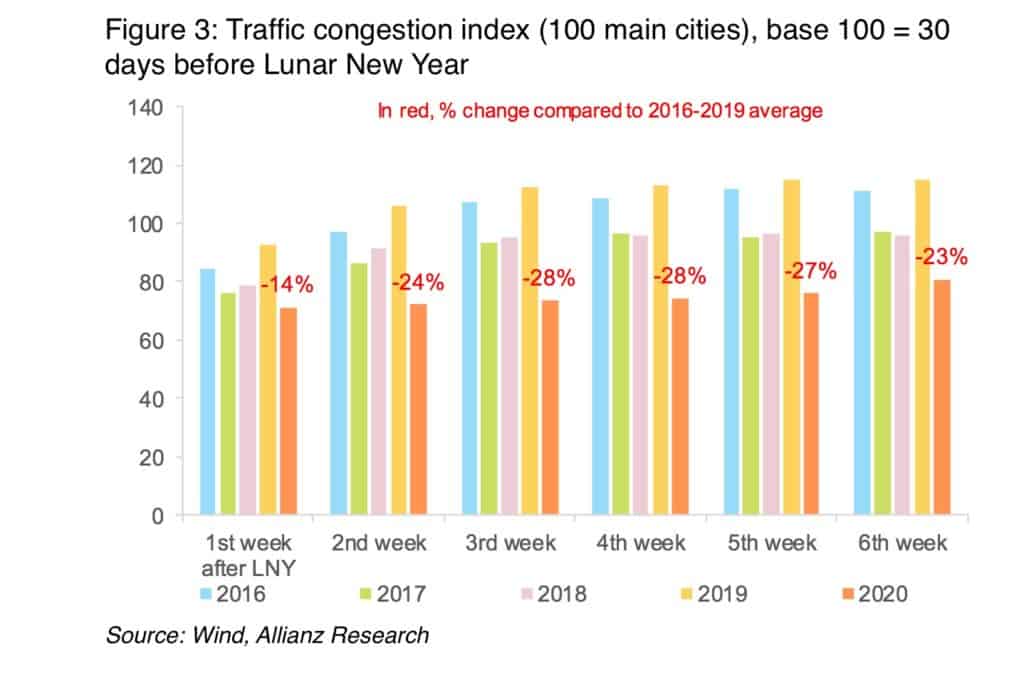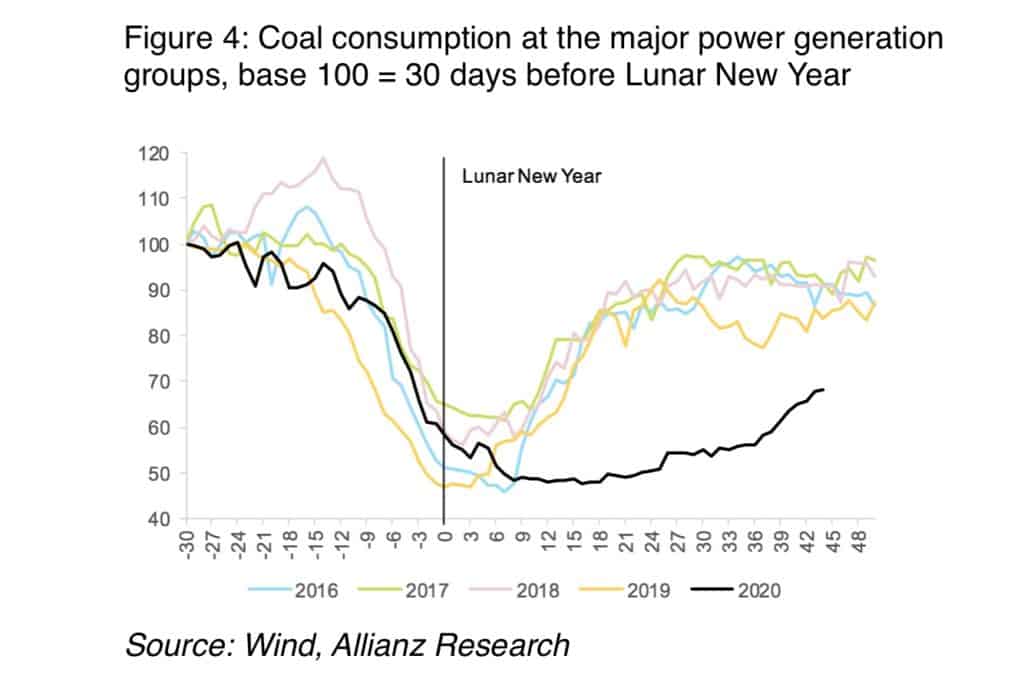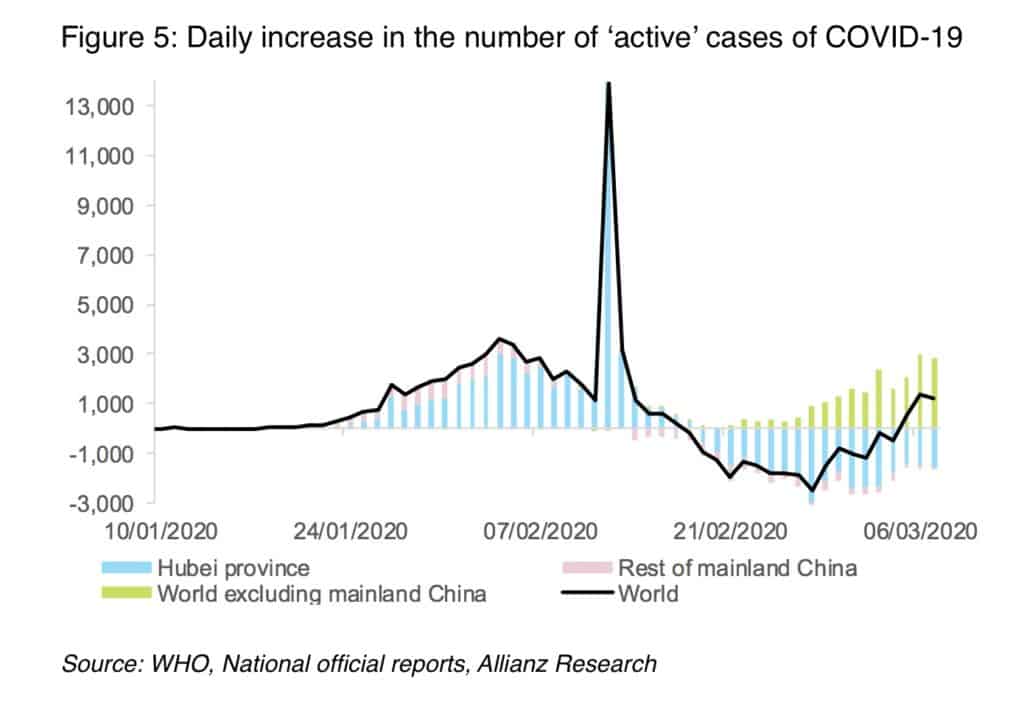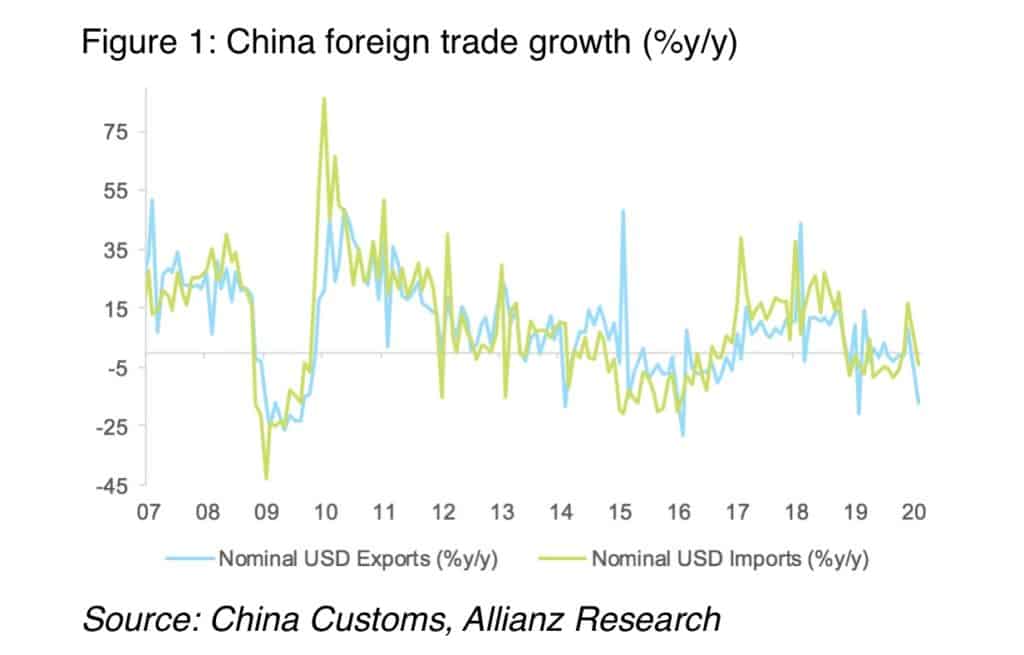Daily data on traffic congestion and coal consumption suggest that the Chinese economy overall is operating about 25% below its usual level in the sixth week after the Lunar New Year, said Euler Hermes recently.


Industrial production, retail sales and investment data for January-February that will be released on 16 March will provide a better picture of how much the COVID-19 outbreak hit the Chinese economy, the company pointed out.
“We expect full resumption of Chinese economic activity by the end of April,” said Françoise Huang, senior economist at Euler Hermes. “Authorities will restart the economy gradually in order to contain the risk of a renewed acceleration in the contagion of COVID-19 as migrant workers return to their places of work, and as the epidemic in the rest of the world worsens”.

As of March 5, Chinese authorities confirmed 36 imported cases of COVID-19 from abroad — about 40% of new cases over ten days across China excluding the Hubei province.
Chinese trade growth in the first two months of 2020 was the lowest since 2016, said Euler Hermes.
The drop remains small compared to 2009, when exports and imports slowed as much as -26.5% and -43.1% year-on-year in a month, respectively, the firm added.
In January and February 2020, exports and imports declined by -17.2% and -4.0% year-on-year respectively, Euler Hermes observed.

The drop in exports was larger than expected and implies the weakest start of the year since 2016, Huang noted, adding that the coming months could show further deterioration in trade as containment measures around the world act as a major trade barrier.
“We estimate that containment measures in China are likely to cost -3pp of Q1 GDP y/y growth, with -1.8pp due to lower private consumption,” Huang said.




